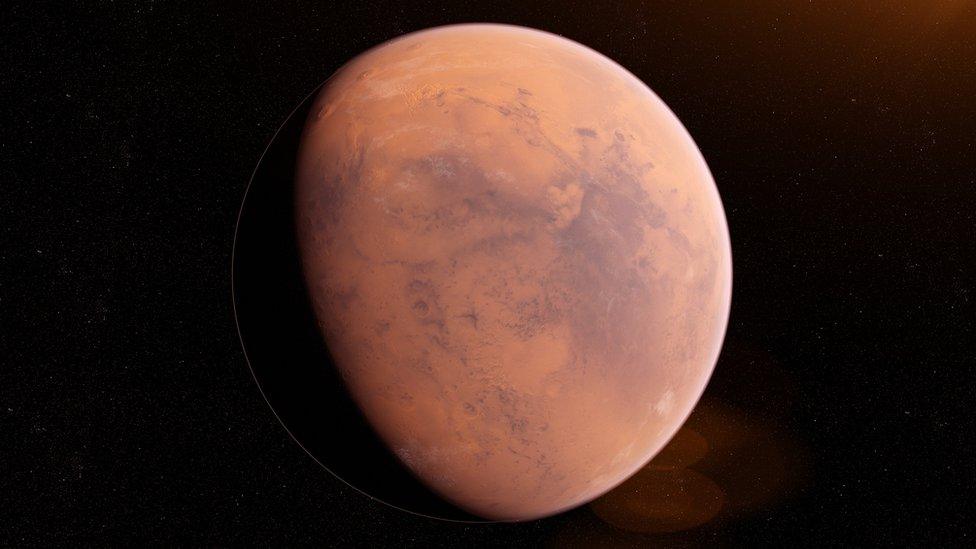Mars InSight: Nasa says red planet is spinning faster
- Published
- comments

Nasa says Mars is spinning faster every year, but the US space agency is not quite sure why.
Scientists have been analysing data from Nasa's InSight Mars lander to track the planet's spin rate, with the findings published in a recent Nature paper.
By studying the planet's rotation they found that a day on Mars is getting shorter by a fraction of a millisecond each year.
The team don't know quite what's getting the red planet in a spin but have theory - let's take a look.
WATCH: What will the Nasa InSight probe be doing on Mars?
Why is Mars spinning faster?
This illustration shows how rocky planets are formed, which is what the team is investigating
Scientists at Nasa involved in the study say they are working with the most precise measurements of Mars' rotation, ever, provided by the InSight probe.
One theory for the planet's increase in speed could be because Mars is changing ever-so-slightly.
A shift in a planet's mass, or what is happening on its surface, can cause it to spin faster.
Researchers reckon this could be down to ice accumulating on the polar caps or where landmasses rise after being buried by ice - otherwise known as post-glacial rebound.
The spacecraft was sent to the red planet back in 2018 to carry out studies.
InSight studied what's going on deep beneath the surface of Mars.
The lander collected data for four years before running out of power in 2022.
How were InSight's measurements of Mars taken?
This illustration shows what InSight looked like when it landed on Mars
InSight launched in May 2018 to help scientists understand more about the red planet.
There were three key instruments on board InSight taking measurements - a seismometer, a heat probe and a radio science experiment.
A seismometer's job was to wait patiently on the surface to sense pulses called seismic waves from marsquakes and thumps when meteorites hit the planet.
The heat probe measured temperatures beneath the surface. To do this, it dug down to a depth of about 5m, deeper than any previous drills or probes had gone before.
The radio experiment (labelled RISE antenna, in the picture below) tracked the exact location of InSight to work out the way Mars moves around the Sun.
The seismometer was desgined to detect any marsquakes or meteorites crashing into the planet
All this information was used by scientists who discovered the planet's increase in spin - and are trying to work out the possible reasons for this.
InSight's principal investigator, Bruce Banerdt said: "It's really cool to be able to get this latest measurement - and so precisely,"
"I've been involved in efforts to get a geophysical station like InSight onto Mars for a long time, and results like this make all those decades of work worth it."
- Published27 April 2023
- Published2 July 2023
- Published1 July 2023
